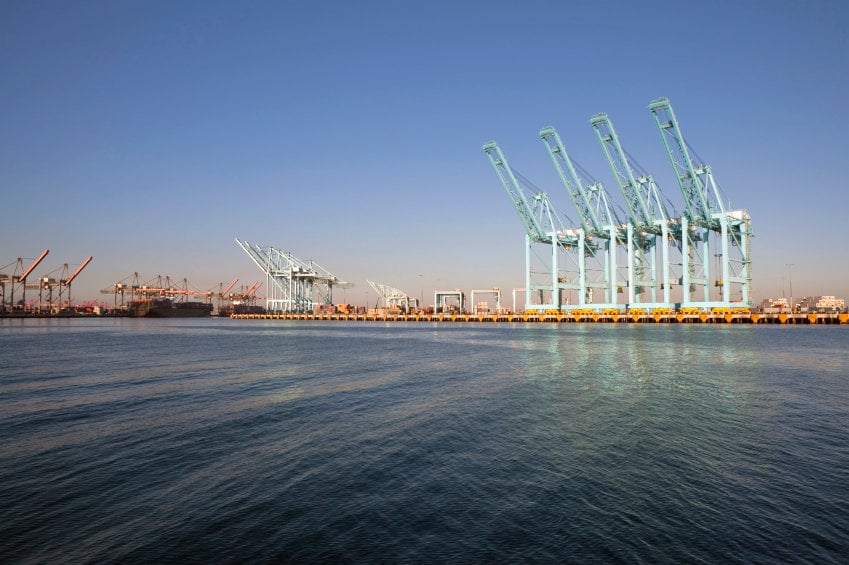Ship development throughout history has been erratic, having been extremely slow during some periods and surprisingly fast at other times. Resistance to technological advances has delayed many ship improvements.
The United States throughout its maritime history has shown great foresight with innovations and technological improvements, but then failed to carry on their development, leaving others to reap the advantages of these developments. The nation has failed to provide the merchant marine the steady attention it should receive. Their impressive periods were those when circumstances seemed most severe and unfavorable. Their too frequent lapses have been caused not by opposition, but by loss of interest, indifference, and attention to other things. This is a time when ship development is proceeding rapidly. World trade has been expanding as a result of population growth and industrialization of underdeveloped countries. To meet this expanding trade, the productivity of ships has been increased. This has been accomplished by an increase in ship’s speed and size along with innovations in cargo handling such as containerization, the LASH system, and the intermodal concept.
The increase in speed and size has necessitated an increase in the power required. However, improvements in marine power plants have not kept pace with improvements in the other areas. Although marine nuclear propulsion has been in use since the launching of the U.S.S. NAUTILUS, there is not a nuclear powered U.S. merchant ship in service today. The reason for this is mainly economic. In the past, with the low power levels and low fossil fuel cost, the higher capital cost of the nuclear power plant has not been outweighed by lower nuclear fuel cost. However, with the higher power requirements and higher fossil fuel cost today and in the future, serious consideration must be given to nuclear propulsion systems.
The era of commercial steam navigation began with the launching of Robert Fulton’s CLERMONT in 1807.

Image 1: Robert Fulton’s “CLERMONT” on the Hudson in 1813
In 1819 the steam auxiliary powered sailing ship SAVANNAH made the first transatlantic passage using her engine 80 hours out of the 29-day voyage from Savannah, Georgia to Liverpool, England. However, that was the last to be heard of the American pioneering effort in the application of marine steam propulsion. It was left to the British to develop and refine steam propulsion.
Another new era in marine propulsion began with the launching of the N.S. SAVANNAH in July, 1959, the era of commercial marine nuclear propulsion. The ship was constructed by the government as a result of a proposal by President Eisenhower as part of his Atoms for Peace Program.

Image 2: NS Savannah – American export Isbrandtsen lines
The SAVANNAH was operated by the State Marine Line from May, 1962 until March, 1963. As the result of a labor dispute, a new general agent, American Export Isbrandtsen Lines**, was named. In 1964, the ship made her first transatlantic crossing. After steaming 89,818 miles and visiting 46 ports on demonstration voyages, she was placed in commercial service in August, 1965. By July, 1970 the SAVANNAH had carried cargo on a commercial basis to 37 foreign and 13 domestic ports, and had sailed to the Far East three times. The ship had made a total of 737 reactor start-ups, steamed 454,675 miles with a reactor plant at sea availability of 99.8%, meeting all advanced schedules without a single plant failure.

Image 3: NS Savannah, engine display
Although she was not designed to be economically competitive, the SAVANNAH program did accomplish the following:
- Proved the technical feasibility and safety of a nuclear powered merchant ship.
- Won acceptance at home and in most foreign ports.
- Demonstrated the capability of a nuclear powered ship to maintain schedules.
- Established a servicing facility for future nuclear powered ships at Galveston, Texas.
- Established a training program for future ship operators.
- Made practical the development of numerous technical studies to explore the future use of nuclear propulsion.,
- Provided knowledge concerning the economics of nuclear ships.
By 1971 the SAVANNAH had achieved her mission. Although she was not economically competitive, Congress was unwilling to continue supporting her operation. She has thus been taken out of service.
After NS Savannah, 3 countries have launched nuclear-powered merchant ships: Germany built the Otto Hahn, which carried ore for nearly a decade. This ship was built in 1968 with the Babcock and Wilcox designed CNSG 1 (Consolidated Nuclear Steam Generator) licensed to Germany in 1966. By mid-1970 the OTTO HAHN had steamed over 70,000 miles with a reactor plant at sea availability of almost 100%.

Image 4: Otto Hahn
Japan built the Mutsu, which was decommissioned after a single test run; and Russia built the Sevmorput, which carried cargo until 2012.
America’s sole nuclear-powered cargo ship was one of the jewels of Eisenhower’s “Atoms for Peace” project. The NS Savannah was supposed to be the first of many American nuclear-powered merchant ships. She turned out to be the last. American Export Isbrandtsen Line has been the only company to make a request for the construction of a nuclear powered merchant ship. They proposed to build three high speed container ships, however the bill never passed, the ships were not built.
Fuel cost is now more important than in the past. Concurrently with the increase in power demand, fossil fuel prices have risen whereas nuclear fuel costs have tended to decrease.

Image 5: Average annual OPEC crude oil price from 1972 to 2016 (in U.S. dollars per barrel)
As ship’s horsepower is increased, nuclear propulsion becomes relatively more economical than fossil fuel systems. Nuclear ship reactors are economically competitive today and will become more competitive in the future at lower power levels.
Note:
**(American Export Isbrandtsen Lines, New York, was the leading US-flag shipping company between the U.S. east coast and the Mediterranean from 1919 to 1977, offering both cargo ship services and passenger ship services, until it declared bankruptcy and was acquired by Farrell Lines, New York, wikipedia),




